

Cover: Childe Hassam, Yonkers from the Palisades, 1916, 1917.40

Editor: Julieane Frost
Editorial Assistant: Jack Gallagher
Design: Kim Noonan

Photography: Stephen Briggs, Dany Pelletier, Troy B. Thompson




Cover: Childe Hassam, Yonkers from the Palisades, 1916, 1917.40

Editor: Julieane Frost
Editorial Assistant: Jack Gallagher
Design: Kim Noonan

Photography: Stephen Briggs, Dany Pelletier, Troy B. Thompson

When the Worcester Art Museum opened its doors 125 years ago, it had a noble purpose: to be an institution where people of all backgrounds could experience art from across the globe and through the centuries. While initially quite modest, the collection grew over the decades into one that is truly outstanding, thanks to generous funding, wonderful gifts of artwork, and capable curators. Today, our organization is on the threshold of an exciting new era, one in which we meet the challenge of being an art museum “for the benefit of all” in the 21st century—in a world very different from 1898.
At the touch of a screen our collection now has worldwide reach and influence. At the same time, our in-person connections with individuals right here in our own community—through exhibitions, programs, and educational partnerships—are more important than ever. Our responsibility to be a museum for all includes a commitment to accessibility and inclusion, as well as embracing stories about human creativity that were left untold in the past. You can witness how we are meeting this responsibility as we add works by historically underrepresented artists to our collection, significantly strengthening their voices and stories at WAM. And how, with our new Lancaster Street Plaza, all of our visitors can now access every Museum entrance.
In the coming months, you will continue to see construction equipment and hear the noise of hammering and drilling as our historic campus gets a much-needed makeover. Already, energy-efficient windows in the Higgins Education Wing and HVAC upgrades are making us greener. A new modern library—also in the Higgins Education Wing—is improving how researchers can use this important art history resource. And roof replacements and enhanced fire-suppression systems are ensuring that our galleries and public spaces are protected. The disruptions and noise are only temporary. When the work is finished, the museum building will be fully updated, better equipped to safeguard the collection and provide a comfortable, sustainable environment for staff and visitors in the decades to come. We will also have a new arms and armor gallery—a much-anticipated addition that will revolutionize our programming.
Throughout its history, the Worcester Art Museum has evolved to meet the changes in our global and local communities. This is only possible thanks to bold, forward-thinking leadership; hard-working, committed staff; and generous supporters, who care about making art available for all. We owe a great deal to the individuals who invested in the Museum over the years. The depth and impact of their contributions—whether it has been through dedicating their time and work, gifts of art, or financial donations—are evident in our recent and forthcoming exhibitions. These include last year’s Jewels of the Nile: Ancient Egyptian Treasures from the Worcester Art Museum and The Floating World: Japanese Prints from the Bancroft Collection, and this year’s Frontiers of Impressionism and Watercolors Unboxed (see pages 8–11). We are excited to share these fresh presentations of some of our most treasured collections.
The Museum is in a very good place, and I am energized by our collective ambitions and commitment to bring it to the next level. In January, the Board voted unanimously to launch a fundraising effort to raise a total of $125 million. The goal of this important campaign is to strengthen the Museum’s physical and financial foundations so WAM can realize its full potential as a transformational organization. Over the past few years, through the support of our Board and close friends, we have raised $58 million of the $125 million goal. We will need your help, and I look forward to keeping you informed of our shared effort.
With so many inspiring and positive initiatives happening all at once, this is a great moment to reflect on Stephen Salisbury’s vision and the Worcester Art Museum’s future. We are grateful to you—our generous Members, Trustees, partners, donors, funders, and volunteers—for helping bring us to this moment and for believing in the Museum’s tremendous potential. I hope you will enjoy reading this issue of access and learning more about our upcoming projects and programs. As always, we would love to hear about your experiences at WAM. Please send your comments to marketing@worcesterart.org.
Board of Trustees 2023
Dorothy Chen-Courtin, President
Douglas S. Brown, Vice President
Sarah G. Berry, Treasurer
Susan M. Bassick, Clerk
Edward M. Augustus, Jr.
Lawrence H. Curtis
Jennifer Davis Carey
James C. Donnelly, Jr.
Michael B. Fox
Mark W. Fuller
Jennifer C. Glowik-Adams
Karen M. Keane
Sohail Masood
Thomas P. McGregor
Thomas Michie
Malcolm A. Rogers
Kent Russell
Jonathan R. Sigel
Anne-Marie Soullière
Cynthia L. Strauss
George W. Tetler
Carmen D. Vazquez

Christina Villena
Ex Officio – Matthias Waschek, The Jean and Myles McDonough Director of the Worcester Art Museum
 Jean and Myles McDonough Director
Jean and Myles McDonough Director


New York had one. So did Philadelphia and Boston. Worcester’s Stephen Salisbury III believed his hometown deserved an art museum, too. In 1896 the philanthropist and art collector joined forces with other community leaders to build one for their city. Theirs was a bold vision. Worcester’s museum would not be a repository of a rich man's treasures, but rather an institution created “for the benefit of all.” People of all ages, walks of life, and backgrounds would view masterpieces from around the world and learn—as never before—about art and the world in which it was created.
This year we celebrate the 125th anniversary of the realization of Salisbury’s vision: the opening in 1898 of the brand-new Worcester Art Museum. It was the beginning of a remarkable journey for a fledgling institution with big ideas, forward-thinking leadership, and a generous community. While initially WAM's collections were modest (many of the pieces on display were loans), the collection steadily grew over the decades through thoughtful purchases and the munificence of collectors and supporters. Family portraits by Gilbert Stuart, silver by Paul Revere, and America's first public collection of Japanese prints soon went on display. The Museum bought works by Impressionists, fresh from their studios. Just over a decade after opening, WAM had established a fine arts library and founded a progressive art education program that continues to this day. Strategic initiatives, such as co-sponsoring the first major excavation at Antioch and purchasing a medieval Chapter House in the 1930s, were impressive for a museum in a city of Worcester’s size.

But WAM is not an institution that is satisfied looking back. It is one that looks forward, seeking ever new opportunities to deliver Stephen Salisbury’s original vision. Thus, after 125 years—and five additions to the original building—the Worcester Art
Museum now stands as one of our nation’s finest encyclopedic art collections, one that is sought after throughout the world for scholarship, loans, and traveling exhibitions. And through innovative programming, transformative education, and wide-ranging outreach, WAM benefits more people and has a greater impact than could ever have been imagined in 1898.
We celebrate this anniversary by honoring Salisbury’s dream—and the many who also believed in it—with a bold campaign to ensure that the Museum’s collection and historic building will enrich lives for generations to come. This campaign will raise $125 million to fund major capital projects, strengthen the endowment, and provide important operational and programming support. When completed, the Worcester Art Museum will have a historic building meeting 21st-century standards to safeguard the collection, including a state-ofthe-art arms and armor gallery; strong, sustainable finances to carry the organization forward with confidence; and robust, creative programming to engage and inspire both new and existing audiences.
It is time for WAM to build a solid foundation for a future that both honors its distinguished history and realizes its tremendous potential. Museum Members will learn more about “The Campaign for Worcester Art Museum” in the coming months. In the meantime, please join us for our Spring Community Day on Sunday, May 7, to celebrate WAM's birthday! Admission will be free to all.
The Worcester Art Museum is 125 years old! Learn how the Museum came to be what it is today—including curious facts, notable moments, and important milestones along the way— in an updated historical timeline on our website. Access the timeline here:

April 1 – June 25, 2023
At the turn of the 20th century, around the time the Worcester Art Museum first opened its doors, French artist Claude Monet was spending winters in foggy London painting his Waterloo Bridge series. During the warmer months, he was at work in his Giverny garden cultivating his famous water lilies series. A few decades earlier, Monet, along with other French artists, such as Camille Pissarro and Alfred Sisley, had pioneered a new art movement—Impressionism—a daring departure from long-established painting traditions. Characterized by a lighter, looser brushwork; a dedication to painting outdoors (en plein air); and a commitment to capturing on canvas what the artist saw (rather than a stylized version of it), Impressionism would become one of the most popular and enduring styles of art.

While artists were breaking ground across the ocean, the WorcesterArt Museum was hard at work assembling a collection for its brand-newbuilding.TheMuseum’sDirector at the time, the forward-thinking Philip J. Gentner,purchasedtwopaintingsbyMonet directly from the artist’s Parisian dealer, Paul Durand-Ruel. The 1910 acquisitions of Waterloo Bridge (1903) and Waterlilies (1908) by the French artist were among the first paintings from these series collected by an American institution. The year before, Gentner had bought Mary Cassatt’s Motherand Child (1903), making WAM one of the first two American museums—along with the Metropolitan Museum of Art in New York—to purchase a Cassatt. These bold acquisitions set the pace over the next decades for the Museum to amass a stun-ning collection of American and European paintings that shows the range of Impres-sionism’s influence and appeal.
According to Claire Whitner, Director of Curatorial Affairs and James A. Welu Curator of European Art, this selective process of purchasing Impressionist works in the early 1900s makes WAM’s collection uniquely curated. “Many of these paintings were purchased by WAM within a few years of their creation,” she says. “The Museum was definitely ahead of the curve in collecting what was then contemporary art and still new to broader American audiences.”
Some 50 of these works, representing over 30 artists, have been organized into Frontiers of Impressionism, debuting at WAM on April 1. The exhibition tells the story of Impressionism’s roots and emergence in France and its subsequent expansion to the United States, Germany, Scandinavia, the Caribbean, and beyond. Highlighting such artists as Monet, Cassatt, Pissarro, Pierre-Auguste Renoir,
Childe Hassam, and Max Slevogt, Frontiers of Impressionism demonstrates the movement’s international allure and its national adaptations, captured in everything from the serene details of lily pads to the wonders of the Grand Canyon.

While some paintings will be familiar to WAM regulars, about half of the works in Frontiers of Impressionism will be on view for the first time in decades. This expanded look into the collection will provide greater context to the story of Impressionism’s evolution as a major art movement.
The exhibition will also include several key examples of Puerto Rican Impressionism. Two landscapes by artist Manuel Jordán, loaned from Puerto Rico’s Instituto de Cultura Puertorriqueña, and three paintings by Francisco Oller from private lenders will be on view in Worcester. This will be the first time the works by Manuel Jordán will travel outside of Puerto Rico.

After closing at WAM on June 25, Frontiers of Impressionism will go on tour beginning with the Tampa Museum of Art (September 8, 2023 – January 7, 2024) before moving on to the Tokyo Metropolitan Art Museum and other locations in Japan through 2024. While WAM’s Impressionist gems will certainly be missed while they are traveling, “the tour is an excellent opportunity to expand awareness of Worcester’s collection beyond the Northeast region,” says Whitner. “It will also introduce many American Impressionist artists to Japanese audiences—who have long admired paintings by European Impressionists, but have less experience with works by their American counterparts.” Back at the Museum, visitors will enjoy becoming acquainted with new works on the gallery walls, including some that are usually in storage and others on view as long-term loans.
Frontiers of Impressionism celebrates a style of art that presents the beauty of the visual world in a uniquely accessible and unpretentious fashion—a style that has been beloved for generations around the world. We are fortunate to have a distinguished collection of some of the most renowned Impressionist artists right here at WAM. Now, art lovers in Worcester and around the world will get to experience and appreciate these treasures in a whole new light.
This exhibition is generously supported by the Fletcher Foundation. Additional support is provided by the Pollack PEACE Fund. This project is also funded in part by Ruth and John Adam, Jr. Exhibition Fund, Richard A. Heald Curatorial Fund, Michie Family Curatorial Fund, and the Christian A. Johnson Exhibition Fund. Related programming is supported by the Amelia and Robert H. Haley Memorial Lecture Fund and the Spear Fund for Public Programs.
June 10 – September 10, 2023
The Worcester Art Museum’s collection of American watercolors is among its most treasured, yet we rarely get to appreciate these paintings in person. Due to their fragility and sensitivity to light, works on paper spend most of their lives in climate-controlled storage. This summer, 50 of the Museum’s finest watercolors will come out of their boxes and go on view for the first time in many years.
Watercolors Unboxed, opening June 10, will feature American watercolors from 1880 to 1950, often considered the “golden age” of the medium among American practitioners. Most of these exceptional works have not been on display at WAM since the 1987 exhibition, American Traditions in Watercolor, organized by then-curator Susan Strickler. In addition, Watercolors Unboxed will include a significant selection of European watercolors by such artists as Amedeo Modigliani and Emile Nolde. The exhibition will also present never-before-seen watercolors from the San Ildefonso school, a collective of Native American artists working in the southwest during the first half of the twentieth century. While over 30 artists will be represented in the exhibition, two of the stars will be John Singer Sargent and Winslow Homer, whose
internationally revered works make up a sizable amount of WAM’s late 19th- and early 20th-century American watercolor collection. These paintings will feature prominently in an exhibition section on the daunting technical challenges of watercolor as a medium. These include Sargent’s splendid Muddy Alligators (1917)—a masterful depiction of light, shadow, and texture—displayed alongside preparatory sketches the artist made for the drawing. A seemingly unlikely subject for a renowned portrait painter, this scene of mud-caked alligators sunning themselves at the water’s edge attests to Sargent’s artistic range and virtuosity. The finished watercolor reveals a diversity of techniques: scratching into the paper to denote teeth, applying wax resist to suggest rough textures, and laying on broad brushstrokes to delineate tree trunks.
“Sargent’s bravado and understanding of negative space are unrivaled. He appears to paint without hesitation, which is remarkable when working in a medium as unforgiving as watercolor,” says Nancy Kathryn Burns, Stoddard Curator of Prints, Drawings, and Photographs. “It takes an artist with resolve to make bold strokes in watercolor, as it is hard to ‘take back’ a mark once it’s on the paper.”

The genius of Winslow Homer is revealed in several works from different locales he visited, including Bermuda, the Bahamas, and New England. These diverse watercolors mark his many shifts in style, as well as his extraordinary understanding of how to manipulate the medium to create spatial depth. In Bermuda Settlers (1901), the crisp sunlight, deep-blue sea, and green grass all convey a sense of untouched natural beauty. At the center of his composition, Homer depicts five razor-back hogs grazing, one of which pauses and looks directly at the viewer. In contrast with many of Homer's other works that express competition in nature and impending loss, this watercolor conveys a timeless image of nature's richness and comfort.
“While Sargent’s work is marked by passion, Homer is admired for his patience working in an impatient medium,” explains Burns. “He was adept at fixing mistakes, scraping paper to remove errors, and using his areas of removal as representative elements in a scene. Visitors to the exhibition will be able to better understand Homer’s clever corrections.”
Bringing the exhibition full circle, the final focus will be on a selection of outstanding European watercolors from the Museum’s collection. Almost all are portraits, reflecting the fact that by the early twentieth century American artists had effectively claimed
landscape as their signature subject in watercolor. At the same time, avant-garde art movements like Fauvism and Cubism had taken hold in Europe. These movements tended to focus primarily on the figure. WAM’s European watercolors are no exception, the majority of which reflect the influence of artists like Matisse on German, Russian, and Italian artists who were processing French contemporary art from afar.
One hundred and twenty-five years after the Worcester Art Museum opened, Watercolors Unboxed offers unparalleled opportunity to enjoy the Museum’s stellar collection of American and European watercolors. The chance to see these normally hidden gems before they return to storage for several years should not be missed.
This exhibition is generously supported by the Fletcher Foundation.
Complementing Watercolors Unboxed will be an exhibition of 10 watercolor paintings by students and faculty of WAM’s Studio Class Program. These local artists have formed deep relationships with WAM’s collection, and their work reflects many of the same techniques and skills found in the works in the exhibition.

Past access articles have featured examples of projects completed by WAM conservators, including painting, paper, object, and armor conservation. The Museum's newest exhibition, Frontiers of Impressionism, presented a different challenge. With over 50 of the Museum’s paintings going on tour, making sure the frames looked their best became a priority. For several months in 2022, consulting frame and gilding conservator Andrew Haines conducted a thorough condition evaluation of every frame in the show, making repairs and improvements as needed. Here he answers some questions about the work he did.
access: Why are frames important to a work of art?

AH: Unlike the digital or printed images we see every day, paintings and other two-dimensional works of art exist in three-dimensional spaces. Therefore, the frame both supports the painting and creates a transition from the image to the physical world. The frame may be a wonderfully carved gilt baroque masterpiece, or as simple as an unfinished slab of wood. Framing tastes may change with each generation, but the need for a frame never goes away.
access: How did you approach conserving the frames in Frontiers of Impressionism?
AH: After observing a frame’s aesthetic and historic relationship to the picture, I looked to see what was broken, discolored, or missing from the overall design. Occasionally there is loose ornament that needs to be stabilized before it does harm to the frame or to the painting. Often the gilt surface is lifted or flaking, in danger of being lost. Preserving what is there is the first consideration.
Next, I looked to see if the frame had been altered from the original design. The group of paintings in this show includes several that were collected early in the Museum’s history, and label information revealed that many still have their original frames. Nevertheless, these objects were subject to the
passage of time and changing tastes. Parts of frames have broken, bits of ornament were missing, and some old repairs to the frames were clumsy or had discolored with time.
access: What techniques did you use to restore damaged frames?
AH: To replace missing ornament, I used a mold-making putty employed by dentists and faithfully replicated the missing elements, casting in two-part epoxy attached with liquid animal-hide glue. For lost gilding, I applied a similar technique, filling the losses with epoxy putty or a polyvinyl acetate (PVA) spackle. Once these fills were leveled, I in-painted or in-gilded with acrylic paint, using an alternative gilding technique of applying gold leaf to acrylic paint instead of using the traditional glue-based gilding. This way a future conservator could remove my work using solvents that do not disturb the original gilt surfaces remaining on the frame.
access: What happens if the existing frame is aesthetically not right for a painting?
AH: It is important to determine who put the painting into the troubling frame and why—and to record the relationship of that frame to that painting in the object file for future reference. I look to see if there are early photos of the original frame in the Museum’s records or online and then “go shopping” in storage for something
that is similar. For three of the paintings in Frontiers of Impressionism, we were lucky to find “uninhabited” frames of the appropriate period and correct size that suited the works much better.
access: Was there a frame that was particularly interesting to work on?
AH: In the first half of the 20th century, “rottenstone” was commonly used on the frames seen on Impressionist paintings. One example of this is Mary Cassatt’s Mother and Child (1902–1903). Made from ground-up shale, rottenstone is typically used as a fine abrasive in jewelry or woodworking, as well as in gilding. In the case of the Cassatt frame, gray rottenstone was applied over the brightly gilt frame to dull the appearance, hide losses, and disguise repairs. Cleaning rottenstone from gilding can be difficult, but I was able to remove it from the French, “Louis” style frame. Dating from the time of the painting, it once had a very lively gilt surface, enriched with cast ornament, and burnished to match gilding applied over different recut background textures. Today, after the heavy wash of gray has been removed, we can see a surface that, although worn, resembles gold leaf polished to a mirror like appearance.
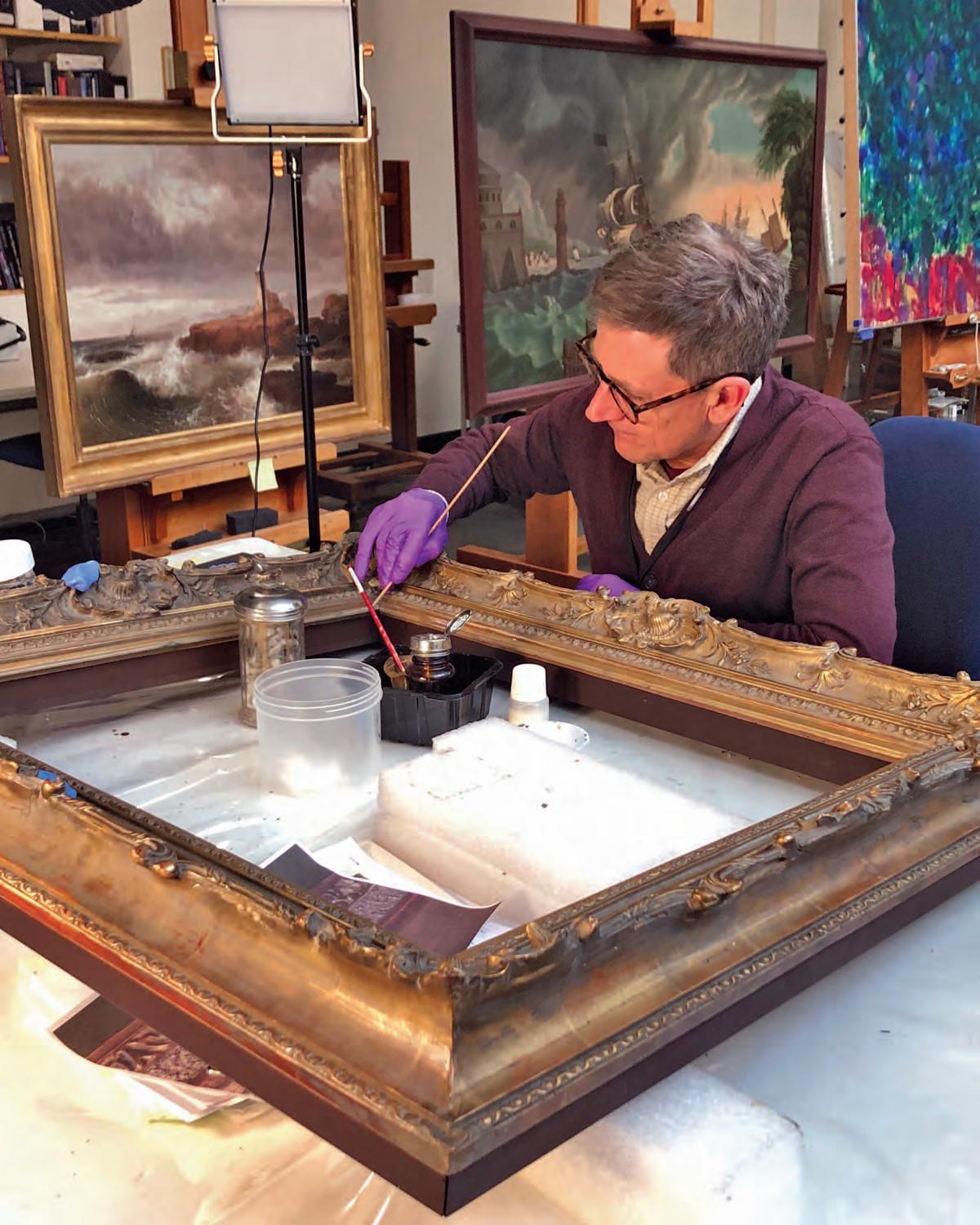
Works of art speak to us in different ways; sometimes we find ourselves returning to the same piece over and over. Members of the WAM community tell us about their favorite works in the Collection.
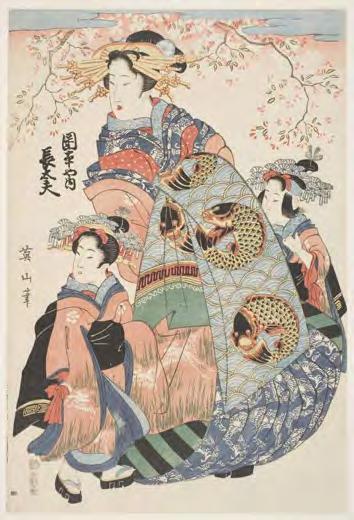

Every time I bring someone to WAM, we go around the firstfloor galleries and end in the chamber filled with decorative medieval sculpture, armor, and religious objects. Just when the guests are ready to move on, I ask them to step back to the middle of the room so they can look up, and, without fail, I am instantly rewarded with an astonished “wow.” The gallery’s ceiling is an original Mudéjar-style alfarje from 15th-century Spain. This type of painted wooden ceiling, which gives an impression of a vibrant multi-colored tapestry, was mainly used in churches or palaces in Islamic culture.
The symmetrical ceiling, created by several large girders that support narrower beams, is completely covered by a kaleidoscopic array of decorative motifs: geometrical and floral, symbolic, and heraldic. Red

and emerald pigments, typical for Spanish art of the Middle Ages, are dominant in the arabesque pattern of foliage and spiraling tendrils, while squares and lines are painted in golden yellows and vibrant blues. One can notice a pattern of coats of arms of different, probably Castilian, dynasties above the carrying beams. Despite the fact that every inch of the ceiling is exquisitely painted, this is an example of a relatively “plain” Spanish alfaje, suggesting a stronger Muslim influence in the area where it came from. With Moorish architecture appearing everywhere from Europe to Latin America, this object can be recognized as a cultural mark by many visitors from all over the world. I encourage everyone to stop by the medieval art galleries during your next visit and admire WAM’s beautiful alfaje!
We fell in love with the Worcester Art Museum before we realized that it has an outstanding collection of Japanese art, which we collect and love. At first, we became acquainted with the Museum when using our Brooklyn Museum of Art reciprocal membership. Later, we switched our membership to WAM, because we enjoyed it so much. One day we were fortunate enough to tour the galleries with Director Matthias Waschek. It was magical—and began our love affair with the Museum. He introduced us to the Asian art curator, who introduced us to the Bancroft collection of Japanese prints, which is absolutely world-class. We have collected Japanese woodblock prints
since we got married 46 years ago, and seeing the Bancroft collection was an amazing gift for us. The quality of the art and the depth and breadth of the collection are remarkable. We also love the rotating case exhibitions in the Japanese Gallery, including the current one of Meiji metalwork. It is not to be missed!
Who could have predicted that the Museum we would fall in love with is a four-hour drive from our home in Brooklyn? We make the drive regularly, because the exhibitions—both permanent and rotating—are wonderful. We have loved so many of them, from Jewels of the Nile to The Kimono in Print to What the Nazis Stole from Richard Neumann We are incredibly grateful for all WAM has done for us.

Yellow school busses parked on Lancaster Street. Groups closely listening to their docent guides in the galleries. Students deeply engaged in a studio art activity. These are common sights at WAM during the school year. In fact, providing art education for children has been part of the Worcester Art Museum’s mission since 1911, when the first classes were offered for youth, and later when the Museum became one of the earliest to combine a gallery visit with art making. Integral to this success is a long history of collaboration with area schools and educators. Some of these collaborations—the Worcester Child Development Head Start partnership, Worcester Public School’s Advanced Placement Art History and 4th-grade Culture LEAP programs, and the annual Youth Art Month exhibit—have been featured in previous issues of access magazine and are known to WAM Members and supporters. These programs are just a sampling of the many ways the Museum works with schools.
“WAM’s collection is an incredible teaching and learning resource. The opportunity for students of all ages to engage with the history and practice of art in a nearby museum with a wide-ranging collection is something I find truly inspiring,” says Marnie Weir, Director of Education and Experience. “The lessons learned about the human experience while in the pres¬ence of art remain with us for our whole lives. Helping to foster those experiences for the youth of our city is one of the Museum’s highest priorities.” Thus, when the Massachusetts Art Educators Association (MAEA) chose to hold its annual conference at WAM last November, it was an ideal opportunity to bring museum educators and art teachers together for in-depth discussions and idea sharing. Over 130 educators from all corners of the state attended the full-day event, the first in-person MAEA conference since 2019. In addition to hearing keynote speaker Wanda B. Knight, Ph.D., Assistant Dean for Diversity, Equity, and Inclusion and Professor of Art Education, African American Studies, and Women’s, Gender & Sexuality Studies at Penn State University, attendees participated in sessions covering a wide range of art education topics. They also enjoyed docent-led tours of the WAM collection, sketching in the galleries, and hands-on art workshops. As might be expected with an engaged group of educators, the conference was fertile ground for all types of exploration—from hands-on activities to theoretical concepts. One example of this was “Drawing as Embodiment,” a session presented by Dani
Schechner, Director of Education at Learners at the Center in Boston. Participants practiced innovative teaching methods, including interactive modeling, art-making, and reflection. “Through these embodiment-based exercises, we explored multisensory and kinesthetic engagement, differentiation to create equity through our practices, as well as deeper sustained understandings of mindfulness, socio-emotional learning, and anti-bias to ensure success for all learners,” she says.
Lydia Gruner, a teacher at the Devereux Therapeutic Day School and the MAEA Conference Committee Chair, led a hands-on workshop on making stained-glass pendants. “Artists feed off each other's energy, and the feedback we get from sharing our work with others is essential to professional growth. WAM’s studio spaces were ideal for this,” she says.
Transmediation, or the process of translating one symbol system to another, was explored in an interactive session led by Rebecca Duffy, a visual art teacher at Algonquin Regional High School in Northborough and a faculty member at WAM. Using tempera paints and oil pastels, educators experimented with this teaching tool for enhancing literacy and cross-cultural learning in their classrooms. Duffy says she especially welcomed the in-person conversations and information sharing with other teachers. In addition, after experiencing firsthand what the Museum offers, she brought back to her classroom “new ideas for field trips and suggestions for her students to visit.”

For WAM staff, having 130 teachers from across the state in the building was an invaluable opportunity to hear directly how the Museum can support art education in and out of the classroom, according to Elizabeth Buck, Manager of Studio Class Programs and an MAEA board member. “One of the best ways to reach budding artists is through schools,” she says. “Teachers play a crucial role in exposing students to art and making a way for them to explore their creativity.”
Even for an institution that has offered art education for 125 years, there is always room for growth, says Weir. “Our educational focus has remained strong because, over the decades, the Museum has adapted to meet evolving needs of schools, teachers, and students. Through our collaborations with organizations like MAEA and our local schools, we will continue to leverage this amazing art collection for the use and enrichment of future generations.”
The new acquisition of a painting by Egyptian artist Souad Abdelrassoul enhances the Worcester Art Museum’s growing collection of global contemporary art. Blending pan-African artistic influences and a modernist painting style, Abdelrassoul creates surreal images inspired by her experiences as a Middle Eastern woman. The artist’s compositions combine humans, animals, and nature to imply an interdependence of all living things. In Forced Relationship, the wounds of the truncated trees are highlighted by an orange hue echoed in the distortions of the woman’s face, while the anthropomorphized owl intensifies the unsettling surrealism of the scene. Held, or held back by the ominous owl/man, the woman is clothed in a transparent garment symbolizing the vulnerable feeling of being exposed even when covered—a common experience of many women.
WAM is one of the first U.S. museums to acquire Abdelrassoul’s work. This painting joins a strong group of contemporary figural artworks focused on women, including work by Alice Neel, Rona Pondick, and Kiki Smith, while expanding the Museum’s representation of contemporary African art.

A16th-century etching of three magnificently dressed foot soldiers complements WAM’s arms and armor and print collections. Purchased by the Museum last fall, Three Swiss(?) Soldiers is by designer, etcher, and wood engraver Daniel Hopfer. The Renaissance artist began his career as a decorator of arms and armor. Hopfer applied this technology to make ornamental designs that he transferred from steel onto paper. These early impressions are credited as the first known etchings. Hopfer’s new technique, which allowed for long sinuous lines, inspired other artists, like Albrecht Dürer.
The weapons and extravagant clothing shown in the print identify the figures as either German foot soldiers (Landsknechte) or Swiss mercenaries (Reisläufer). Simultaneously admired and feared for their discipline, ferocity, dangerousness, and boldness of spirit, Landsknechte and Reisläufer were popular subjects in 16th-century art, and the Hopfer print is an excellent example. The soldiers’ weapons and garments have counterparts in the Museum's Higgins Armory Collection, including the rippled surfaces and broad-toed shoes, which echo the familiar “Maximilan” armors of the period. In addition to offering narrative context to these objects, Three Swiss(?) Soldiers also augments WAM’s encyclopedic works-on-paper collection, given Hopfer’s significance in the history of intaglio printmaking.

Alarge trompe l’oeil drawing, depicting more than 170 portraits of Dutch and Flemish painters active between the 15th and the 18th centuries, was purchased by the Museum last fall. Trompe l’oeil, or “trick of the eye,” is a genre of artmaking used in both painting and draftsmanship where the artist creates the illusion of real three-dimensional objects on a two-dimensional surface. Trompe l’oeil dates back to the Renaissance and peaked in popularity in the 18th century. In this untitled and unattributed drawing, the artist copied the portraits of artists found in two 18th-century published surveys of great Dutch and Flemish artists. This trompe l’oeil employs several “tricks.” First is the illusion that the work is comprised of engraved portraits, when in fact they are ink drawings. More impressive, however, is the illusion that the 170 individual “prints” appear to be collaged onto a mount. In fact, the drawing was created using two large sheets of paper. The artist accomplished the collage trick by varying the tones, shading, and shapes of the individual portraits. The appearance of uneven edges on the portraits suggest that a sometimes-clumsy hand cut them from the reference books. This drawing is among a handful of trompe l’oeils in the collection and augments WAM’s holdings of artist portraits, the majority of which were made in the 20th century.

2023
Thank you to all who helped make Flora in Winter 2023 a success!


Flora in Winter Chairs: Kim Cutler, Kathy Michie, and Sarah Ribeiro
Committee Members: Sally Jablonski and Julie Lapham
Sponsored by:
Every exhibition and program at WAM is only possible through the generosity of people who care about the Museum and the topic being presented.
Individual donors, along with foundations and corporations, are vital. If you would like to learn more or offer your personal support for one of WAM’s extraordinary exhibitions or programs, please contact Karmen Bogdesic at KarmenBogdesic@worcesterart.org or 508.793.4326.
Brittany Severance’s ongoing photographic series, Blind/Blend, and her film, Illuminated, challenge our expectations of how a photograph or video should look. The Worcester-based multimedia artist explores the relationship between vision and understanding, manipulating the camera to capture the world as she sees it. An assistant professor at Worcester State University, Severance has a degenerative vision impairment that informs and shapes her creative practice. The artist simulates her uncorrected severe near-sightedness by photographing her daily life using a soft focus and a shallow depth of field. She says she invites viewers “to consider alternative ways of seeing the world…and to build an understanding and connection between full-sighted individuals (including those who may use corrective lenses) and people who have low vision.” In her work, Severance asks: is identifying an image’s source material important or “can we accept it as something unique and beautiful on its own?”
Rachelle Beaudoin
May 10 – November 5, 2023
Rachelle Beaudoin is an artist who uses video, wearables, and performance to explore feminist identity within popular culture. For her CMAI installation, Beaudoin presents a suite of video-based performances exploring society’s conceptions and expectations around motherhood. Centered on her own body and experiences, Beaudoin’s often satirical videos are insightful takes on pregnancy and childrearing. Beaudoin attended the College of the Holy Cross and holds a Masters of Fine Arts degree in Digital + Media from Rhode Island School of Design. Her work has been exhibited nationally and internationally. In addition, she has been awarded numerous residencies, including a 2014 Fulbright Core Scholar residency at quartier21 and an arts and culture creative space in Vienna, Austria. She currently teaches in the Visual Arts Department at the College of the Holy Cross in Worcester, MA.

After eight decades in storage and a multi-year restoration, Shipwrecked Mother and Child by Edward Augustus Brackett (1818–1908) is now in its permanent home in the Morgan Gallery, part of the second-floor European Galleries. Completed in 1851, this life-sized marble statue depicts a nude mother cradling her young child, both with eyes closed and torsos twisted. Although created by an American artist, Shipwrecked Mother and Child is displayed among European artworks. Brackett was strongly influenced by European art, as evidenced in his portrayal of the nude, an artistic subject that was uncommon—even taboo—in America and New England at the time.

Thanks to generous funding from the Henry Luce Foundation, the 1½ ton sculpture underwent an extensive conservation treatment beginning in December 2019. Visitors were given the opportunity to follow along through the glass doors of the Museum's Jeppson Idea Lab as Senior Objects Conservator Paula Artal-Isbrand meticulously cleaned and repaired the figures. One hundred and fifty years of dirt and grime were dissolved and removed using gel-based agents, while missing fingers and toes were 3D printed and replaced in collaboration with scientists at Worcester Polytechnic Institute (WPI). Now restored to its original splendor, Brackett's masterpiece has at long last returned to WAM’s galleries where it can be enjoyed by all who visit.
This project is generously supported by the Henry Luce Foundation.
David “Dave” and Barbara Krashes began collecting American folk art in 1965 after purchasing an empty 18th-century farmhouse in Central Massachusetts. With limited funds to furnish their new home, the Krashes attended an auction and bought an antique two-dresser maple blanket chest at an astonishingly low price. That began their lifelong passion for collecting early Americana, reflecting their attraction to the strong forms, rich colors, and diverse textures of the works, as well as regional craftsmanship that operated outside of fine art schools.
Over six decades, the Krashes surrounded themselves with objects of New England’s past, creating inviting interiors in their farmhouse through a kaleidoscope of color and texture. Theirs became one of the most important private collections of folk art in the country, representing the most significant and notable
names in the genre from the post-revolutionary period—including such artists as Sturtevant Hamblin, Edwin Plummer, Rufus Porter, and William Matthew Prior.
Dave’s interest in and study of the paintings they acquired led him to publish several articles on Central Massachusetts folk portrait painters that were featured in Folk Art, Maine Antique Digest, and The Clarion.
A portion of the Krashes’ collection was featured in the 2015 WAM exhibition, American Folk Art: Lovingly Collected. In 2022, the couple donated to the Museum more than 40 works, including 20 paintings, 11 works on paper, five sculptures, four pieces of furniture, and one textile. The Krashes Collection includes superb examples of early Americana and folk art from New England and significantly enhances the Museum’s holdings of American art. It also serves as an excellent study of folk art collecting in the 20th century.
Dave passed away on September 30, 2022 at the age of 97. Along with Barbara, he was a longtime Salisbury Giving Society Patron and Museum supporter. We are so very grateful for their generosity over the years and for the historic legacy they have left the Worcester Art Museum.
A new Worcester Art Museum internship honors the memory of Sandra Rapp, a former employee, longtime Member, and supporter of the Museum. Established in 2022 by a gift from her family, the Sandra D. Rapp Internship reflects Sandra’s devotion to her family, passion for the arts, and lifelong pursuit of learning. The position also allows the Museum to offer an equitable, paid professional development opportunity for undergraduate or graduate students.
Sandra joined WAM as its Membership Manager in 1991 after graduating from Wellesley College. She met her future husband, Worcester native Carl Rapp, while working at the annual gala in 1993. Following their marriage four years later, the couple moved to Philadelphia where they raised their two daughters, Emma and Charlotte. During her professional career, Sandra worked in development for a variety of non-profit organizations, including the Wharton School at Penn, Princeton Day School, Heritage Land Conservancy, Art Sphere, the National Foundation for Celiac Awareness, and Angel Flight East, and, during the final months of her life, volunteered for the Appalachian Trail Club. Inspired by her daughters, Sandra returned to school twice. She earned a paralegal degree in 2011, and in 2018 received a Master's in Art History and Arts Administration from Temple University. Sandra passed away on December 20, 2021 at the age of 52.
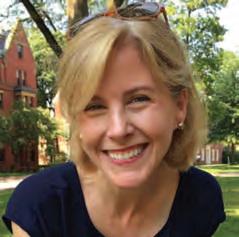
The Sandra D. Rapp Internship provides an exceptional opportunity for undergraduate or graduate students to gain practical work experience while helping the Museum fulfill its mission to connect with new audiences. The first to serve in this internship is Clark University junior Eleanor Rueffler. Since August 2022, she has been working closely with a team of Worcester Polytechnic Institute students, who are developing a mobile app that will provide a guided tour for people with limited vision or who are blind. As part of the team, Eleanor is creating content for the app, including identifying art objects in the collection to be included in the tour, collecting curatorial information about the works, and drafting audio descriptions. When completed, the app will allow visually-impaired visitors to experience, in a completely new way, many of the art treasures in the Worcester Art Museum collection.
We are grateful to the Rapp family for their generous gift that not only beautifully honors Sandra’s memory, but also allows students to gain valuable experience as they embark on their professional careers.

Our expert team of volunteer docents host guided public tours of the Museum's collection on a wide array of topics, both in the galleries and online.
Visit worcesterart.org/events/tours for the latest tour schedule and find out how you can learn more with WAM.
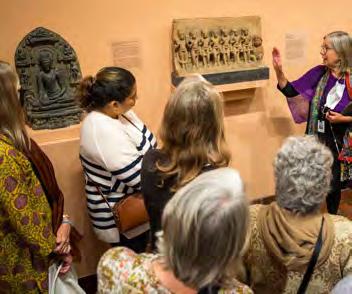
Onsite tours begin in the Lancaster Welcome Center.
Private Tours
To schedule an onsite adult or youth/student group tour, contact grouptours@worcesterart.org. Visit worcesterart.org/events/grouptours to learn more.
Spring Community Day
Sunday, May 7
Join us as we celebrate the Worcester Art Museum’s 125th birthday. Enjoy a day of live performances, art making, storytelling, face painting, and more!
Free admission.
Sunday, May 17
Enjoy a docent-led tour of the exhibition, Frontiers of Impressionism, followed by a special tea service with sweet treats.
Painting in the Park
Sunday, August 13, 10am-2pm
Institute Park
Bring your art supplies next door to Institute Park for a day of watercolor painting in the beautiful natural surroundings of one of Worcester’s most picturesque parks. Join other artists and art lovers who are inspired by and enjoy painting en plein air.
Arms and Armor Presentations
Discover different kinds of arms and armor used by Roman soldiers, medieval knights, and more at these fun, interactive programs.

Art Carts: Family Fun in the Galleries
Art Carts are a great way to explore different themes in art and deepen your WAM experience. Have fun learning with creative hands-on activities throughout the galleries. Check our website calendar for dates, times, and locations. Visit worcesterart.org/events for an up-todate schedule of Arms and Armor Presentations, Art Carts, and more. All programs are free with Museum admission unless otherwise noted. Admission is free on the first Sunday of each month. Information subject to change; please visit worcesterart.org for scheduling updates prior to coming to WAM.
Whether you are an experienced artist or just beginning to explore your creativity, we have a class for you! Visit worcesterart.org/classes for course descriptions, schedules, and registrations. Members enjoy discounted class tuition.

Hone your skills or learn new ones in inspiring art classes and workshops in a variety of media, such as photography, printmaking, painting, drawing, calligraphy, and more. Classes typically meet weekly and are offered on weekdays in the morning, afternoon, and evening, and on weekends in the morning and afternoon. Special intensive summer classes are offered in a week-long format. The adult summer session runs from May to August, with new and returning classes on the schedule.
Our summer program is designed with kids and families in mind. Week-long programs run from 9am to 3pm and include art classes, themed experiences, social breaks, and more—all in a safe, fun environment infused with creativity! Classes are offered for students 3-13 years old and cover a range of media, from painting to digital art, on topics ranging from ocean art to drawing in perspective. Extended day is available to fit your family’s schedule.
Teen Classes
Art classes for teens range from experiences for beginning artists to portfolio reviews for aspiring art college entrants. Week-long programs run from 9am to 3pm. Our instructors, whether teaching oil painting, life drawing, etching, mixed media, or other options, will provide guidance and direction in a relaxed, comfortable atmosphere.
WAM Teen Council
Do you know a teen with a passion for the arts and a dedication to community building? We’d like to meet them! Teens interested in helping to develop programs for teens can reach out to us at teens@ worcesterart.org to get involved.
We are pleased to offer limited paid apprenticeships for teens interested in pursuing art, art education, or museum education. Teen apprentices will experience a variety of facets of museum education, from research and inventory to public relations and art class assistance. Applications are accepted on an ongoing basis throughout the year. Learn more at worcesterart.org/classes/teenclasses.
Teen Arts at WAM is supported in part by the National Endowment for the Arts. Youth and teen studio class programs are supported in part by United Way of Central Massachusetts.


The Worcester Art Museum’s Spotlight Series features in-depth presentations by art scholars, providing insights and stories about works in the Museum’s collection or on view in special exhibitions. Visit worcesterart.org/events/talks to learn more.
Bringing Arms and Armor to Life
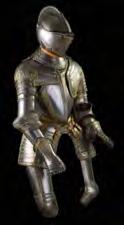
April 16, 2pm
Speaker: Jonathan Tavares, Curator of Applied Arts of Europe, Art Institute of Chicago
As WAM works to plan its new Arms and Armor Gallery, join Jonathan Tavares as he shares his work to bring arms and armor to life at the Art Institute of Chicago. Tavares will also share stories from the creation of the 2017 Nova episode, “Secrets of the Shining Knight.”
Redefining Graffiti
May 21, 2pm
Speaker: Sneha Shrestha, an artist, educator, and social entrepreneur Sneha Shrestha, also known as IMAGINE in the art world, has established herself as a Nepali street artist, meshing the Nepali alphabet and the Boston graffiti scene. Her work marries the beauty of an elegant script with the mindful mantras
she incorporates into her canvases. She also established Nepal's first Children's Art Museum. Shrestha will speak about the breadth of her work and about her painting, Devi (Goddess), which was recently acquired by WAM, as well as the mural work she has done in Massachusetts and around the world.
How Winslow Homer Challenged the Rules of Watercolor
June 18, 2pm
Speaker: Elizabeth Athens, Assistant Professor of Art History at the University of Connecticut, and Former Assistant Curator of American Art at the Worcester Art Museum
Watercolor conjures notions of the delicate, the ethereal, the precise—of washes of color and of scenes bathed in light. Yet Winslow Homer actively took on those assumptions: digging into his paper, scratching out areas, and making brilliant use of accidents. Elizabeth Athens will examine the scope of the nineteenth-century watercolor tradition in the United States, with a special focus on how Homer’s work both drew on and defied it.
Hosted by the WAM Members’ Council, the Spotlight Series is presented with support from the Bernard G. and Louise B. Palitz Fund and the Amelia and Robert H. Haley Memorial Lecture Fund.
Sponsored by:
Free admission
Through April 2
Youth Art Month
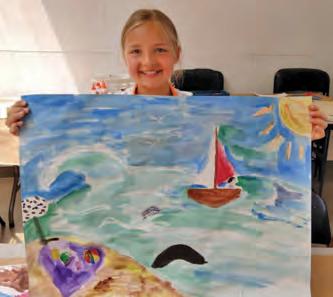
April 15 – May 7
Teen Art Exhibit
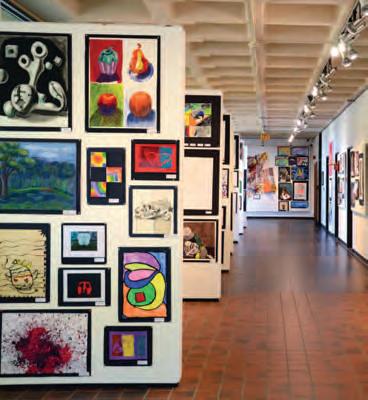
May 13 – June 4
HeadStart Celebration Show
Scholarships are available for onsite and online classes. Individuals with financial need who would like to apply for a scholarship may contact us at 508.793.4339.
June 10 – July 16
AP Art History Capstone Exhibit
July 19 – August 18
IMPACT: The Adult Student Show
August 23 – October 1
Youth Student Art Celebration
Seen at WAM! From exhibition openings and community days to Flora in Winter and tours— WAM is the scene of many memorable art moments. We hope to see you here soon!

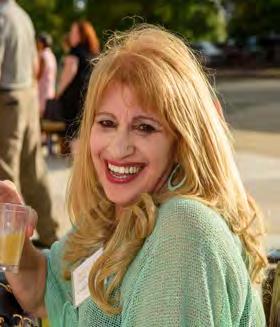

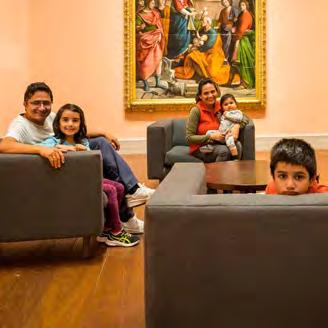
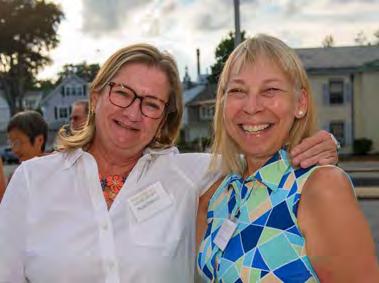


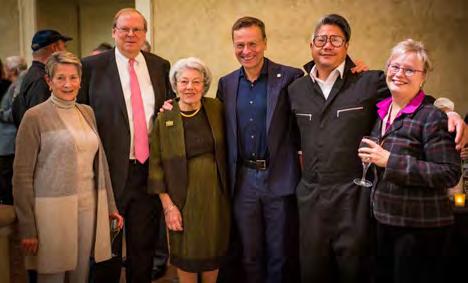


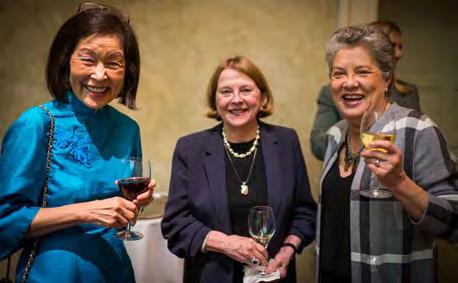
Amanda is an entrepreneur with a passion for art, history, and fashion, and a mother to a wonderful 12year-old son. Amanda has always been fascinated by the past and even lives in a house from the 1700s. In her free time, you can find her visiting museums, vintage shopping, or going to gardens with her son. Amanda’s love for history and the arts has greatly influenced her life and she is always looking for ways to learn and grow.
access: What made you decide to become a Member of WAM? I became a Member because I love to visit each new exhibition that the Museum puts on. I realized if I was planning on going more than twice a year, a membership just made sense. I also like to try to support local museums that are special to me and my family.
access: How frequently do you visit the Worcester Art Museum? I visit the Museum at least 3-4 times a year. If there is an exhibition that is family-friendly, that number will go up. I think we visited the Ed Emberley exhibition at least that many times when it was there!
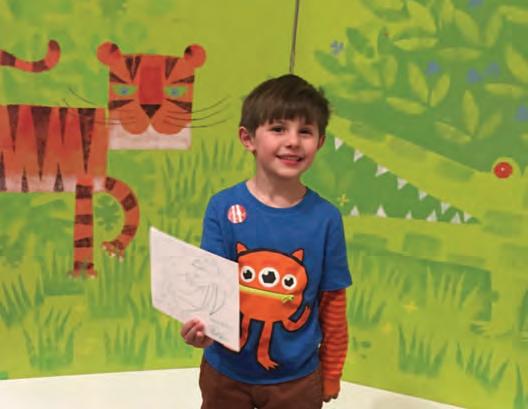
access: In what ways have you become more involved at WAM? I have been on the Members' Council for a few years. In that time I have volunteered at Flora in Winter, Members’ events, and one or two exhibition openings. This year I am president of the Members' Council and have joined a couple more committees. I enjoy having the chance to get more involved with WAM.
access: What benefits of membership do you appreciate the most and why? The benefits I appreciate the most are entry to special events like Flora in Winter as well as other complimentary Member events. Just being able to attend Flora in Winter for free is worth the membership price.
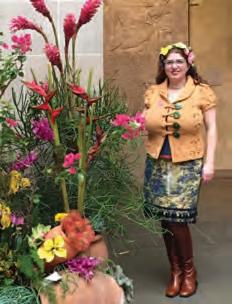
access: Do you have a favorite memory of your visits to WAM? Some of my favorite memories of my visits to WAM are with my son. Watching him become completely immersed in works like Reusable Universes in 2017. I loved how the artist, Shih Chieh Huang, put cushions on the floor under the sculptures so you could lie under them and take in the amazing movement. Also, the Ed Emberley exhibition, Kahbahblooom, was a standout in its attention to detail. My son was able to meet Ed Emberley, who drew him a picture. It was really a one-of-a-kind, special exhibition that we will remember for a lifetime.
• RECEIVE free admission all year! Benefactor Members also receive reciprocal membership at select museums.
• GAIN free admission to Flora in Winter.
• ENJOY special tours, talks, virtual presentations, and sneak-peeks, just for Members.
• EARN discounts in the Museum Shop and on tuition for studio classes.
Renew, upgrade, or purchase a gift membership online at worcesterart.org/join, email membership@worcesterart.org, call 508.793.4300, or stop by one of the Guest Services desks at WAM.
The Salisbury Giving Society is a vibrant group of enthusiastic Museum supporters. They provide the resources needed to care for WAM’s world-class collection, create outstanding exhibitions, and deliver impactful programs—key components of fulfilling our mission to connect people, communities, and cultures through the experience of art.
In appreciation of their generous support, Salisbury Patrons enjoy opportunities to connect with the heart of the Museum, its collections, and its people, including:

•In-person and virtual events with WAM’s director and curators
•Special access to Flora in Winter and exhibition openings
•Museum trips led by WAM curators
•Opportunities to share WAM with family and friends
•Reciprocal membership at over 1,400 museums throughout North America
Upcoming Salisbury Giving Society Programs (Subject to change)
Frontiers of Impressionism Opening Weekend Reception and Tour
April 1, 2023
Join Claire Whitner, WAM’s Director of Curatorial Affairs and the James A. Welu Curator of European Art, for a tour of Frontiers of Impressionism. After the tour, join your fellow Salisbury Patrons for an elegant reception in the Renaissance Court, followed by the public exhibition opening.

Watercolors Unboxed Tour and Cocktail Reception
Summer 2023
Join Nancy Kathryn Burns, WAM’s Stoddard Curator of Prints, Drawings, and Photographs, for a private tour of the exhibition Watercolors Unboxed.
For questions or more information about the Salisbury Giving Society, please contact Katy Sullivan at KatySullivan@worcesterart.org or 508.793.4325.
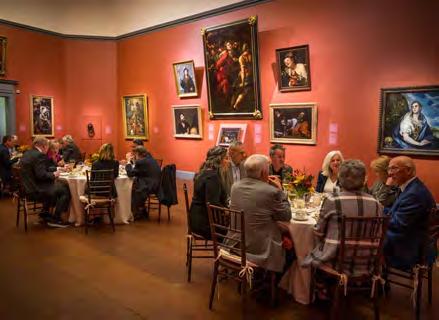
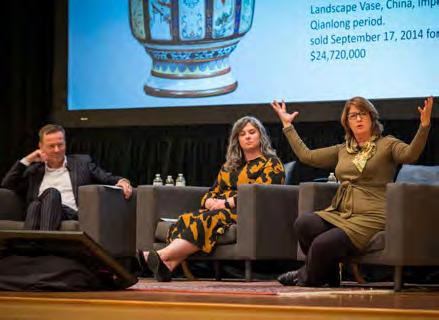


George and Lynne Tonna are residents of Worcester and own a commercial real estate development company with properties in Worcester and the greater Boston area. They are active members of Worcester’s St. Spyridon Greek Orthodox Cathedral, and St. Nicholas Romanian Orthodox Church in Shrewsbury. Born and raised in Worcester, George believes in supporting local organizations. The couple have been Salisbury Giving Society Patrons since 2004, and Lynne has been a Corporator since that time as well. Prior to that, Lynne took several photography/darkroom courses taught by the late Ed Esleek and was involved with the Museum through her media career, helping to promote events and exhibitions. She is also currently on the Salisbury Giving Society Committee, a group that promotes the Salisbury membership, and has volunteered with WAM’s Flora in Winter.
As the Tonnas see it, the Worcester Art Museum is one of the finest museums in the world and a crown jewel of the city, in which all Worcester residents should take great pride. They appreciate the everchanging galleries and the compelling exhibitions that showcase visiting master-
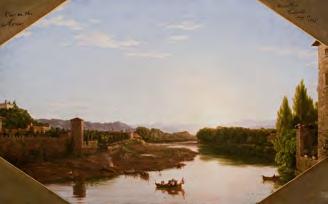

pieces and highlight seldom-seen gems from WAM's own collection. From Asian to Greek to Dutch to African art, there is a lot to consider. One of their favorite pieces of Worcester trivia is that the Museum was the first in the USA to purchase a Monet “water lilies” painting. As a photography buff, Lynne has enjoyed past photo exhibitions such as the homage to photojournalist Robert Capa and Kennedy to Kent State. George is partial to the Higgins Armory Collection, and to paintings of the American landscape from the Hudson River School, particularly the works of Thomas Cole. The beautiful light in these landscape paintings glow in the galleries. WAM is intimate yet filled with awe-inspiring and important works.
Lynne says, "We stand on the shoulders of those who came before us, and if not for the founders of WAM and its current supporters, we would not have such a significant cultural institution in Worcester. It takes a lot to maintain the building and its climate-controlled storage, along with restoration and acquisition. If we want a world-class city, it is vital to support this world-class museum.”
$10,000+
AbbVie
Cornerstone Bank
Country Bank
Fallon Health
FLEXcon
Interstate Specialty Products, Inc.
Saint-Gobain
UMass Memorial Health Care
UniBank
WinnCompanies
Workers Credit Union
$5,000+
Berkshire Bank
Bonhams Skinner
Bowditch and Dewey, LLP
Digital Federal Credit Union (DCU)
Imperial Distributors, Inc.
Kaplan Construction
Patrick Motors
Rand-Whitney Container
Reliant Medical Group
Rockland Trust
Webster Five
Worcester Business Journal
$2,500+
Herbert E. Berg Florist, Inc.
The BHR Life Companies
The Boston Globe
CCR Wealth Management, LLC
Christie's
Fletcher Tilton PC
Foley Incorporated
Gaudette Insurance Agency
iHeart Radio, 961 SRS & WTAG
Lamoureux Pagano Associates | Architects
Mirick O’Connell
WBUR
$1,000+
AAFCPAs
Avidia Bank
J.J. Bafaro, Inc.
Bartholomew & Company, Inc.
The Berry Machnowski Team, Moneta Group
Blue Cross Blue Shield of Massachusetts
Central One Federal Credit Union
Columbia Tech
Cutler Capital Management, LLC
Data Source, Inc.
Davis Publications, Inc.
Franklin Realty Advisors
Fiducient Advisors
Green Leaf Construction
Greenberg, Rosenblatt, Kull & Bitsoli, P.C.
Kelleher and Sadowsky Associates, Inc.
Leduc Art and Antiques
Mercier Electric Co., Inc.
Miles Press, Inc.
Russell Morin Catering and Events
J.S. Mortimer, Inc.
New England Disposal Technologies, Inc.
Penta Communications, Inc.
Peppers Artful Events
Point32Health
Polar Beverages
Risk Strategies Company
Rollstone Bank and Trust
Seder and Chandler, LLP
Sentinel Benefits & Financial Group
Seven Hills Foundation
Joffrey Smith Financial Group
Spectrum Health Systems, Inc.
Sullivan Benefits
Sunshine Sign Company, Inc.
Thomas J. Woods Insurance Agency, Inc.
Wings Over Worcester
$500+
Action! by design
Arthur Cole Painting Corporation
Bay State Savings Bank
Bisceglia, Steiman and Fudeman
Burr Insurance Agency, Inc.
Buyers Meeting Point, LLC
Callahan Fay Caswell Funeral Home Coghlin Electrical Contractors, Inc.
Concordia Exchange
Conform Lab
Cryogenic Institute of New England, Inc.
Erland Construction
Fontaine Brothers
F.W. Madigan Company, Inc.
George's Coney Island
Grimes & Company
Jabil
MSW Financial Partners
NAI Glickman, Kovago & Jacobs
Northwood Insurance Agency, Inc.
Sotheby's
Struck Catering
Sullivan, Garrity & Donnelly Insurance Agency, Inc.
As of February 28, 2023

The Legacy Society was formed to recognize those individuals who have included the Worcester Art Museum in their will or estate plans. These generous and visionary Members ensure that the Museum is a vibrant institution that will deliver transformative experiences for future generations. We are grateful to the following individuals who have either left a legacy gift or have included the Museum in their estate plans, thereby making WAM a priority during their lifetime and beyond:
Members of the Legacy Society

Anonymous (3)
Toni Begman
Sarah and Allen Berry
Philip H. Brewer
Dr. Elaine and Mr. Robert* Bukowiecki
Alexandra Cleworth and Gary Staab
Susan C. Courtemanche
Dix and Sarah Davis
Brenda Verduin Dean
Margery Dearborn
Robert A. DeLuca
Patricia and Richard Desplaines, Jr.
Henry B. and Jane K. Dewey
Maria* and John Dirlam
Andrea N. Driscoll
Heath Drury Boote
Stephen C. Fitzsimmons
Dr. James and Mrs. Kathleen Hogan
Frances* and Howard Jacobson
Peter Jefts
Lisa Kirby Gibbs and Peter Gibbs
Joan Peterson Klimann
David* and Barbara Krashes
Marcia Lagerwey and Loren Hoekzema
Claude M. Lee III
Dr. Paul J. Mahon
Jodie and David Martinson
Mr.* and Mrs. Robert K. Massey
Dr. and Mrs. Glenn A. Meltzer
Linda and John* Nelson
Edward J. Osowski
Sarah and Joe Ribeiro
Mr. and Mrs. Henry B. Rose
Mr.* and Mrs. Sidney Rose
Ruth R. Rubin
Jennifer L. and Richard E. Saffran
Dr. Peter B. Schneider
Dr. Shirley S. Siff and Robert M.* Siff
Mary Skousgaard
Mr.* and Ms. Jack Tobin
Members who live on through their generous gift
Mrs. Margery A. Adams
Mr.* and Mrs. William C. Arthur Jr.
Ann Baumann
Mr. and Mrs. Howard M. Booth
Karl and Dorothy Briel
Eleanor H. Burke
Douglas P. Butler
Dr. and Mrs. William T. Carleton
William R. Carrick
Mrs. Fairman C. Cowan
Jeanne Y. Curtis
Mary S. Cushman
Paul Czerny
Janet B. Daniels
Eleanor Daniels Bronson Hodge
Shirley Look Dunbar
Michael E. Economos
Cathleen Esleeck
James E. Lowell
Maurice I. Hurwitz
Mr. and Mrs. I. R. Freelander
Esther and Howard Freeman
Eleanor M. Garvey
Judith S. Gerrish
Robert D. Harrington, Jr.
Mrs. Milton P. Higgins
John and Marianne Jeppson
Britta Dorothy Jeppson
Mary Patricia Keasbey
Sarah Bramson Kupchik
Irving and Marie Lepore
Anne Lewis
Sara Mallard
Myles and Jean McDonough
Ellen E. McGrail
Henry T. Michie
Jean H. Miles
Mrs. David J. Milliken
Mrs. Anne (Nancy) Morgan
Haim G. Nagirner
Viola M. Niemi
Mary Ann Horner Pervier
Marilyn E. Plue
Richard Prouty
Mr. and Mrs. Chapin Riley
Blake Robinson
Louise and Elijah Romanoff
Agnes B. Russfield
Leonard B. Safford
Edith Safford
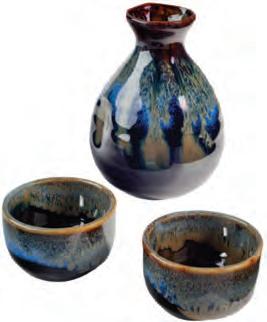
Katherine Sawyer
John. R. Scarborough
Dr. Peter B. Schneider
Norman L. Sharfman
Hope and Ivan Spear
Helen E. Stoddard
Lois Tarlow
Richard S. Teitz
Hester N. Wetherell
Margaret Ray Whitney
Irving N. Wolfson, M.D.
Mrs. Ledlie L. Woolsey
Elton Yasuna
If you are interested in naming the Worcester Art Museum in your will or estate plans, or already have, please visit worcesterartlegacy.org, or contact the Development Office by calling 508.793.4363 or emailing us at EmilyIsakson@worcesterart.org.

Anna Maria College
Assumption University
Bancroft School
Clark University
College of the Holy Cross
MCPHS University
Quinsigamond Community College
The T.E.C. Schools
Worcester Academy
Worcester Polytechnic Institute
Worcester State University
To learn more about Institutional Membership, contact Matthew Blanchard at 508.793.4323 or MatthewBlanchard@worcesterart.org.
The Worcester Art Museum gratefully acknowledges the following foundations and government agencies for their support during fiscal years 2022 and 2023 (as of 2/3/23).
We are grateful to the many local and national funders that make our work possible and sustain innovative exhibitions, public programs, and educational and community endeavors, as well as maintain and improve our facilities.
George I. Alden Trust
American Endowment Foundation
The Americana Foundation
Bank of America Charitable Gift Fund
Barr Foundation
Bassick Family Foundation
Benevity Community Impact Fund of the American Endowment Foundation
The Blackbaud Giving Fund
Boston Foundation
Patrick and Aimee Butler Family Foundation

E. Rhodes and Leona B. Carpenter Foundation
Cricket Foundation
Jeanne Y. Curtis Trust
The Melvin S. Cutler Charitable Foundation
Fred Harris Daniels Foundation
Dirlam Charitable Trust
Ruth H. and Warren A. Ellsworth Foundation
J. Irving England & Jane L. England
Charitable Trust
Sherman Fairchild Foundation, Inc.
Fidelity Charitable Gift Fund
Fidelity Foundation
FJC Foundation
Fletcher Foundation
George F. and Sybil H. Fuller Foundation
Albert J. Gifford Charitable Trust
Greater Worcester Community Foundation
The Richard A. Heald Fund
Bradley C. Higgins Foundation
John W. & Clara C. Higgins Foundation
Hoche-Scofield Foundation
Institute of Museum and Library Services
Worcester Art Museum was founded on a passion for art and community made possible through philanthropy. For nearly 125 years, the Worcester Art Museum has relied on the generosity of donors who believed in the value of the Museum. We honor and recognize the following families, who have supported the Museum
Ruth and John Adam, Jr. Exhibition Fund
George I. Alden Trust Assistant Director of Education Fund
George I. Alden Trust Docent Education Fund
Harriet B. Bancroft Fund
S.N. Behrman Library Fund
Sally Riley Bishop Fund
Barbara A. Booth Flower Fund
Karl L. and Dorothy M. Briel Library Fund
Alexander H. Bullock Fund
Burrow Movie Fund
Isabel Baker Carleton Memorial Fund
Abbie S. and Mildred L. Cather Fund
Douglas Cox and Edward Osowski Fund for Photography
Dorothy Frances Cruikshank Education Fund
Charles E. Culpeper Conservation Laboratory Fund
Dwight A. Davis Fund
Alexander and Caroline Murdock DeWitt Fund
Docent Education Fund
Ruth and Loring Holmes Dodd Fund
Frank F. Dresser Fund
Theodore T. and Mary G. Ellis Fund
J. Irving England & Jane L. England Charitable Trust
Ed Esleeck Photography Fund
David Freelander Memorial Education Fund
David J. Freelander Scholarship Fund
George F. and Sybil H. Fuller Conservation Fund
Thomas Hovey Gage Memorial Fund
Austin S. Garver Fund
Sarah C. Garver Fund
Edward F. Goggin Fund
Nehemias Gorin Foundation Fund
Greater Worcester Community Foundation
Booth Family Fund for Education and Outreach
Martha A. Cowan Fund
Jeppson Memorial Fund
Louise R. and John F. Reynders Fund
Marvin Richmond Fund
Chapin Riley Fund
Helen M. and Thomas B. Stinson Fund
Nathan and Barbara Greenberg Discovery Fund
Nathan and Barbara Greenberg Education Fund
Amelia and Robert H. Haley Memorial Lecture
Fund
Charles A. Hamilton Fund
Richard A. Heald Curatorial Fund
Edith Florence Hendricks Scholarship Fund
Herron-Dresser Publications Fund
Chester D. Heywood Scholarship Fund
To learn more about WAM’s institutional priorities and ways that foundations and government agencies might assist, please contact Christine Proffitt, Senior Manager of Institutional Giving, at ChristineProffitt@worcesterart.org.
Rita J. & Stanley H. Kaplan Family Foundation, Inc.
The Judy and Tony King Foundation
The Kirby Foundation
The Klarman Family Foundation
Carl Lesnor Family Foundation
Henry Luce Foundation
The Manton Foundation
Mass Cultural Council
Cultural Facilities Fund
Cultural Investment Portfolio
Cultural Organization Economic Recovery Program
Cultural Sector Recovery for Organizations
Universal Participation Initiative
Mass Humanities
MassDevelopment
Jean and Myles McDonough Charitable Foundation
Mildred H. McEvoy Foundation
National Endowment for the Arts
National Endowment for the Humanities
Paine Charitable Trust
Arthur M. and Martha R. Pappas Foundation
Joseph Persky Foundation
Schwab Charitable Fund
The Schwartz Charitable Foundation
Stoddard Charitable Trust
TIAA Charitable Gift Fund
United Way of Central Massachusetts
Worcester Arts Council
Worcester Educational Development Foundation, Inc.
Wyman-Gordon Foundation
by creating endowed funds. The income produced by these funds is used to support the purposes communicated by the donor. These funds provide important financial support to WAM and its programs. The Museum is grateful for this enduring legacy of support provided by the following endowed funds:
Hiatt FAME Fund
Jacob Hiatt Scholarship Fund
Higgins Armory General Endowment Fund
The Higgins Curator of Arms and Armor and Medieval Art Endowment Fund
Hoche-Scofield Foundation
Christian A. Johnson Discovery Fund
Christian A. Johnson Exhibition Fund
The Christian A. Johnson Resource Center Fund
Frances A. Kinnicutt Fund
Philip Klausmeyer Conservation Fund
Joseph and Shirley Krosoczka Memorial Youth Scholarship Fund
Macomber Conservation Fund
Jean and Myles McDonough Director Endowment Fund
Andrew W. Mellon Foundation Conservation Fund
Don and Mary Melville Contemporary Art Fund
Michie Family Curatorial Fund
John M. Nelson Fund
Paine Charitable Trust
Eliza S. Paine Fund
Susan Ella Reed-Lawton Fund
Arthur J. Remillard, Jr. Youth Education Fund
Romanoff Education and Library Fund
Marion Olch Ruhman Education Fund
William S. Sargent Fund
Norman and Dorothy Sharfman Education Fund
Helen Sagoff Slosberg Fund
Ethel M. Smith Education Fund
Spear Fund for Public Programs
Stoddard Acquisition Fund
Stoddard Associate Curator of Prints, Drawings, and Photographs Endowment Fund
Stoddard Charitable Trust Directors Fund
Stoddard Discovery Fund
St. Wulstan Society Fund
Sudbury Foundation Scholarship Fund
Alice Eliza Waite Memorial Fund
Miriam Washburn Trust Fund
Karl B. A. Wass/Lundquist Family Scholarship Fund
James A. Welu Curator of European Art Fund
Mary Louise Wilding-White Fund
Worcester Art Society
Bernard G. and Louise B. Palitz Fund
Hall and Kate Peterson Fund
The Worcester Art Museum is grateful to our corporate sponsors for understanding the value of making the Museum’s exhibitions, projects, and programs possible.
If you are interested in establishing a fund, please call 508.793.4363.
Mary E. and Irene L. Piper Scholarship Fund












fifty-five salisbury street
worcester, massachusetts 0 160 9 WORCESTERART ORG
Save time when you arrive, reserve your admission tickets in advance.
HOURS
Wednesday–Sunday, 10am-4pm
Open with free admission during the following holidays: Martin Luther King Jr. Day, Presidents Day, Patriots Day, Juneteenth, and Indigenous Peoples’ Day
ADMISSION
Members: Free
Adults: $18
Seniors and Students: $14
Youth 0-17: Free
EBT, WIC, ConnectorCare cardholders: Free
First Sunday of each month: Free
Free First Sundays are sponsored by Sandy Hubbard and Thomas J. Logan and Saint-Gobain
THE MUSEUM SHOP
Open during Museum hours. For curbside pickup or mail delivery, call 508.793.4355 or email shopsales@worcesterart.org
LIBRARY
508.793.4382 library@worcesterart.org
CLASSES
Higgins Education Wing 508.793.4333 classes@worcesterart.org
GROUP TOURS
508.793.4338 grouptours@worcesterart.org
MEMBERS , BENEFACTORS & ANNUAL FUND
508.793.4300 membership@worcesterart.org
SALISBURY GIVING SOCIETY
508.793.4325
KatySullivan@worcesterart.org
BUSINESS PARTNERS / SPONSORSHIPS
INSTITUTIONAL MEMBERS / ACCESS ADS
508.793.4323
MatthewBlanchard@worcesterart.org
GUEST SERVICES
508.793.4362 guestservices@worcesterart.org
ACCESSIBILITY
All entrances provide barrier-free access. Wheelchairs and walkers are available for loan on a first-come, first-serve basis. Please request upon arrival.
508.799.4406
General operating support is provided by the Barr Foundation, Mass Cultural Council, Patrick and Aimee Butler Family Foundation, Carl Lesnor Family Foundation, Paine Charitable Trust, Jeppson Memorial Fund, Greater Worcester Community Foundation, and J. Irving England and Jane L. England Charitable Trust.
Unless otherwise stated, all images © Worcester Art Museum, all rights reserved.